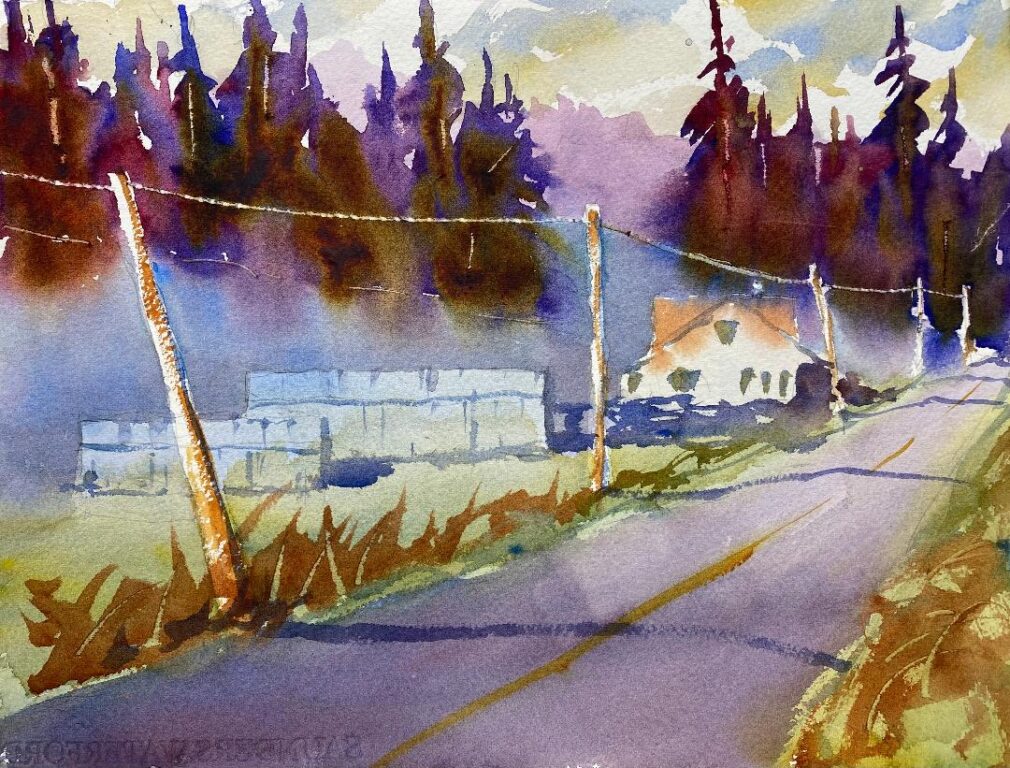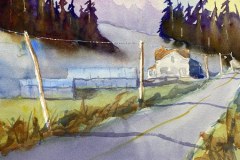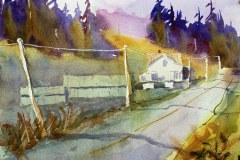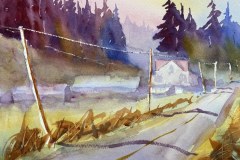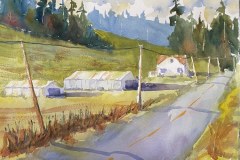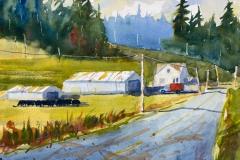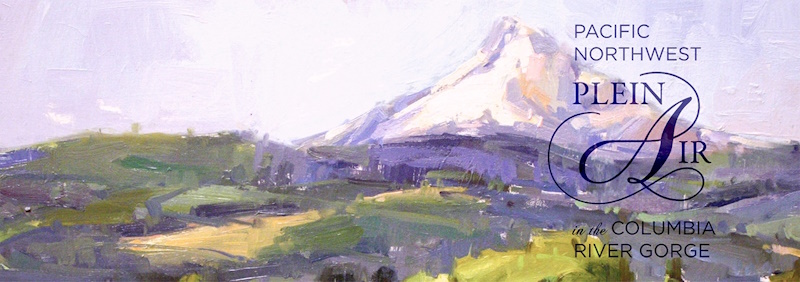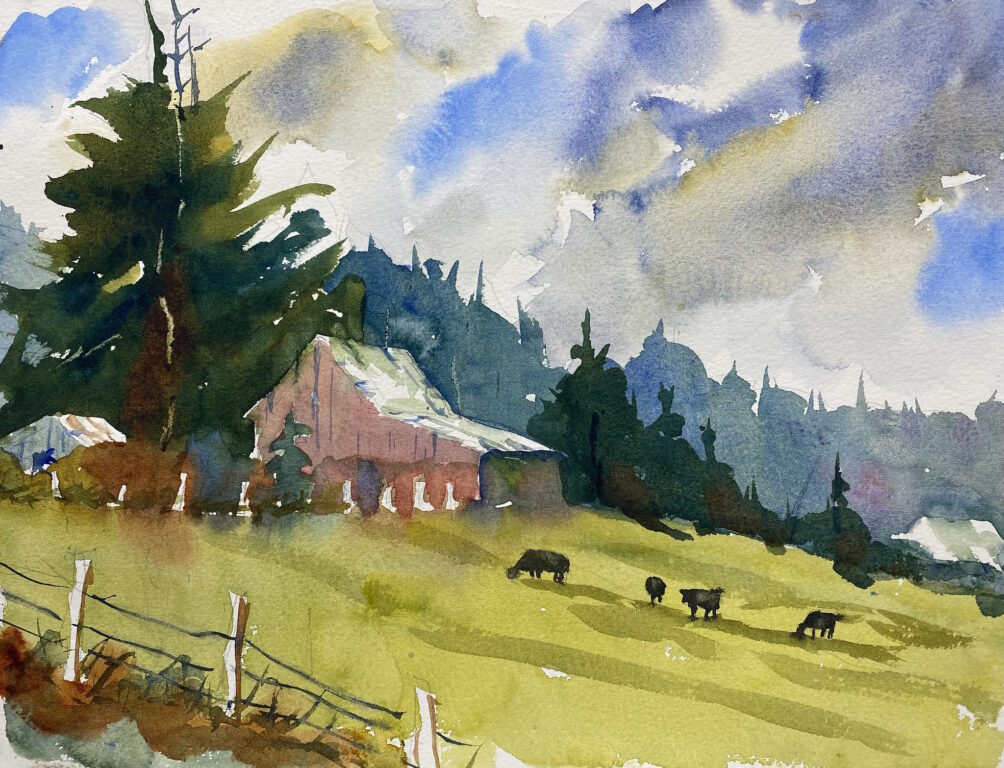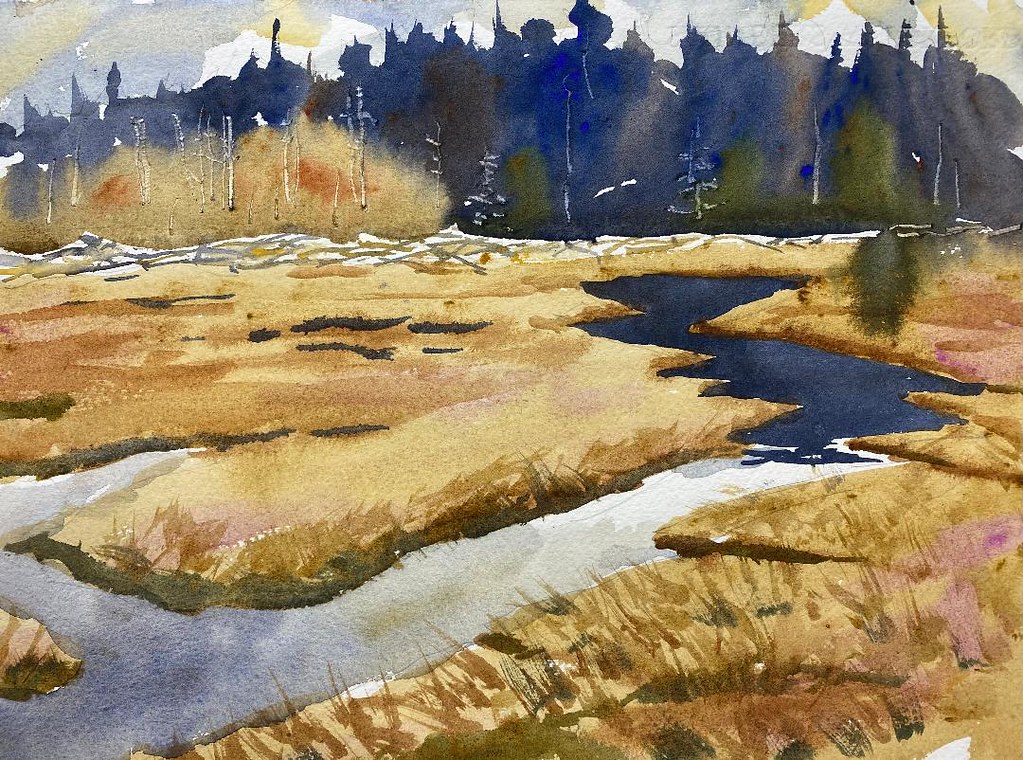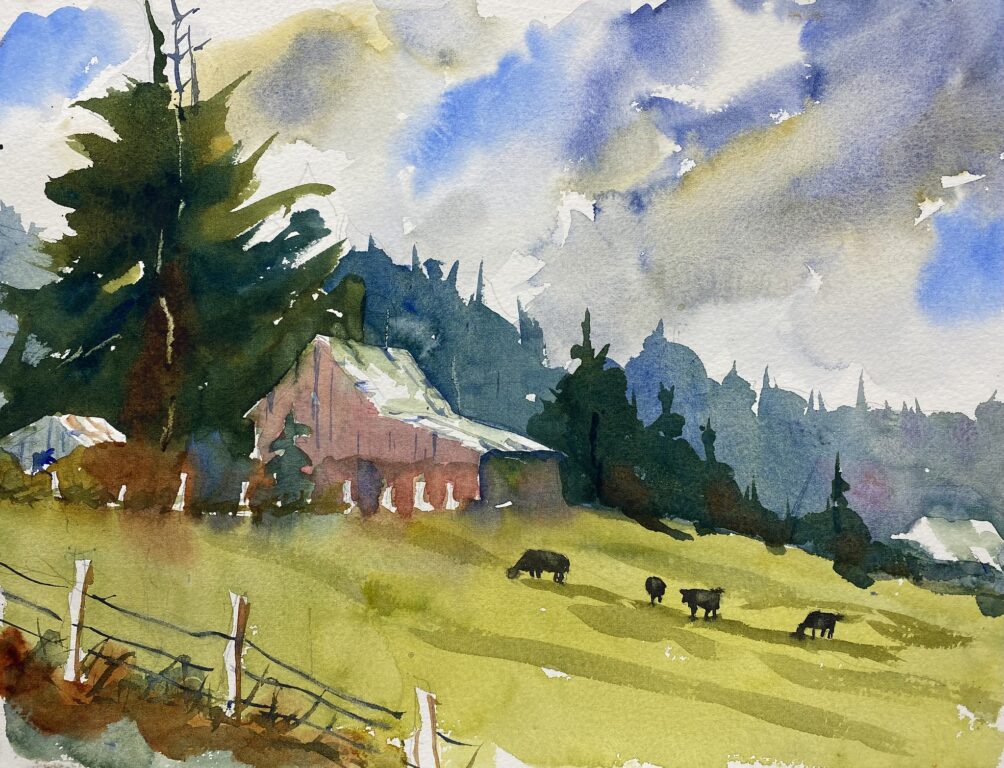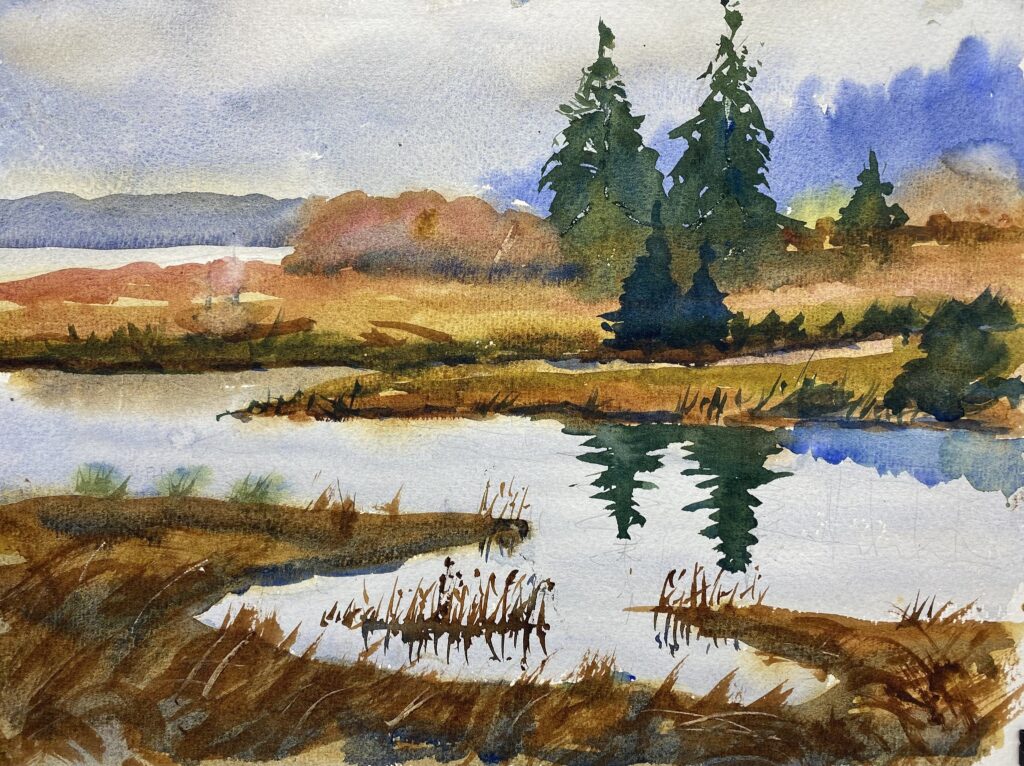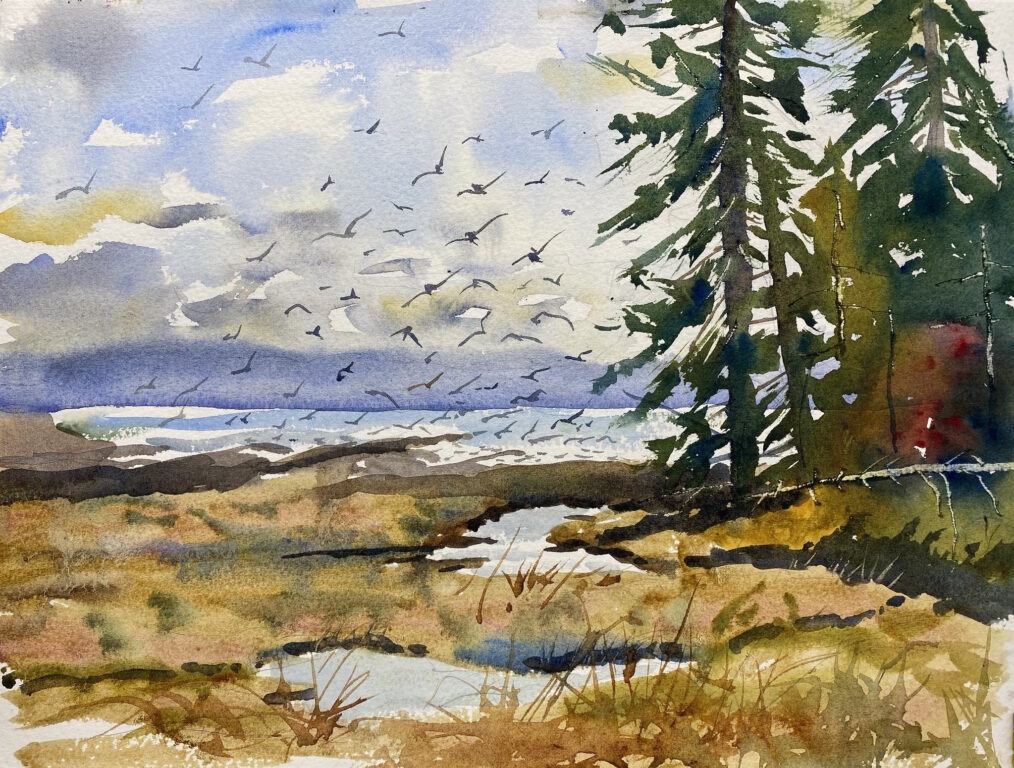Looking back on 2024
Looking back, I can see two things that helped me advance as an artist in 2024:
One was a plein air workshop in July with my teacher Eric Wiegardt. Watching him paint, listening to his commentary as he painted, and being present in the moment were huge factors for me. When I look back on my paintings, I see a big difference before and after the workshop. He helped me become more confident in starting a painting, more bold with my brushwork, and more aware of design.
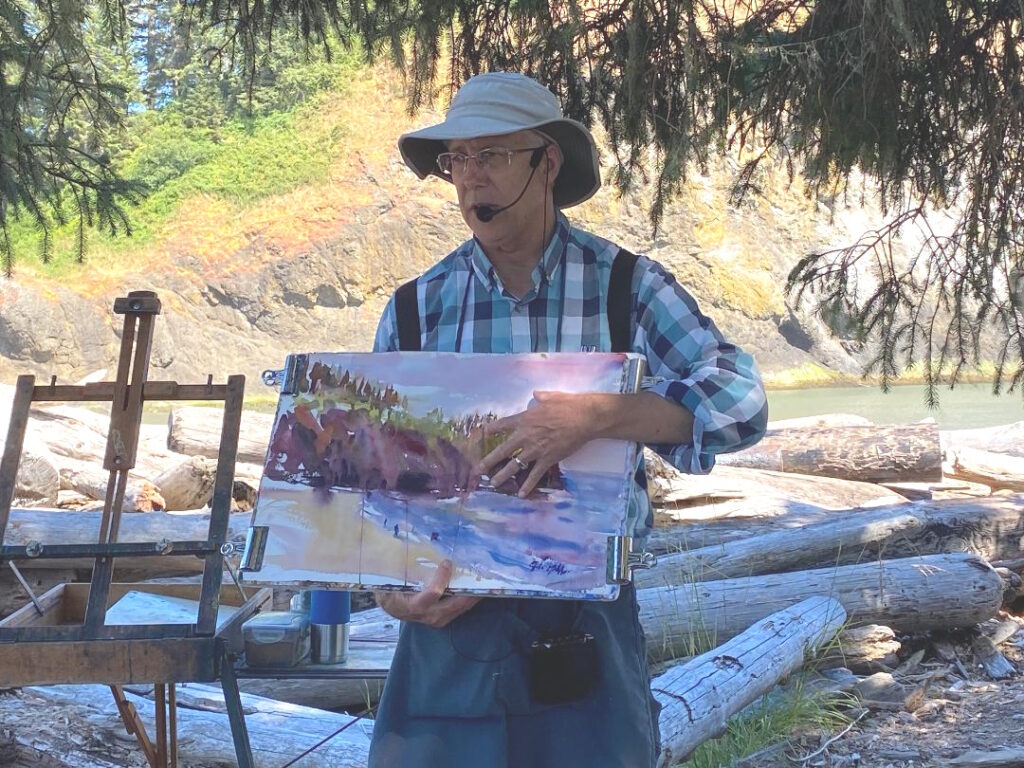
The second thing was my dedication to plein air painting in the later part of the year. From August through November, I made 12-15 plein air paintings a month — that’s about 3 or 4 a week. There’s something about being on location that I find very stimulating. The scene before me comes alive as I make a sketch and begin painting.
My artist friends and supporters help me immensely. I post my work on the Facebook page for Eric Wiegardt’s students, and get feedback every time. That’s so rewarding and encouraging. Commenters on my blog and Facebook posts are also great motivations for me. My friends at Poulsbo Artist League and my life drawing group are likewise encouraging, and of course Katy and Guy are my daily support group.
There were several things that were less helpful in 2024. I took three online workshops, but I didn’t really connect with the teaching and the material. I think in-person workshops are more effective for me. In 2024 I had three commissions to paint churches. I spent an inordinate amount of time on these commissions, and the pressure I felt to produce good paintings made it an anxiety-wracked experience. I don’t plan to do that again!
Among the highlights of the year were selling three paintings at the Whidbey Plein Air Festival, offering a portrait demonstration at Poulsbo Artist League, and being accepted into the 2025 Pacific Northwest Plein Air competition.
My plans for 2025 include an in-person workshop with Eric Wiegardt; plein air competitions in the Columbia River Gorge, Whidbey Island, and Moscow, Idaho; and lots of plein air painting on my own and with friends at Plein Air Washington Artists and the Northwest Watercolor Society.
Here’s to a good year of painting watercolors!
Looking back on 2024 Read More »
